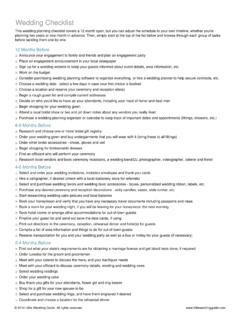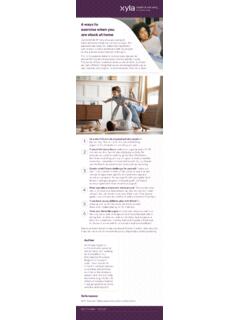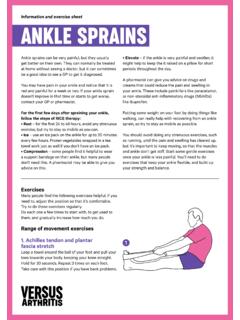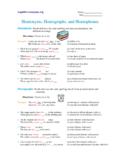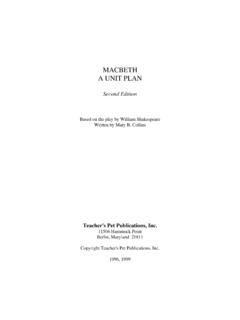Transcription of Strategies for Teaching Science Content Reading - ed
1 The Science Education Review, 2(4), 2003 104 the weave allowed light to peek through ( , the stars), and a hole cut in the top of the basket by a god let light in during the day. Contrary to what many think, it was not explorer Christopher Columbus who first suggested that the Earth is round. Although the very early Greeks thought the Earth was a flat disc floating on water, Pythagorus proposed a spherical Earth about 540 BC. About 250 BC, Eratosthenes made a good estimate of the Earth s circumference.
2 He used the observation that, in a deep well some 787 km south, the midsummer noon sun shone directly downwards, whereas in his town on the same day, the angle of the sun was about . Over 100 years later, Posidonius made another good estimate based on the angles that the star Canopus made, with the horizon, at two different locations. Toward the end of his life, Columbus (1451-1506) came to believe that the Earth was pear-shaped. This conclusion followed observations, during the third of his four voyages to the New World, of corresponding changes in the movement of the North Star and the temperature he experienced, with changing latitude.
3 He further believed that the Garden of Eden was located in the pear s stalk. It was not until 1958 that the satellite Vanguard I provided photographic evidence that the Earth is an oblate spheroid ( , not quite round). The spinning of the earth gives it a slight bulge near the equator. The circumference around the poles is slightly less (just 43 km) than the circumference at the equator. Strategies for Teaching Science Content Reading Patrick E. Croner Venado Middle School, California, USA Abstract Many students have difficulty in Science because they are passive readers, readers who receive information without understanding.
4 Passive readers begin Reading assignments without thinking about the subject. Their counterparts, known as active readers, interact with text to construct meaning. They make predictions, ask questions, generate questions, and vigorously seek answers. For active readers, Reading is a means of actively pursuing knowledge. Active readers engage in metacognition, which is an awareness of how they think. Active readers use both pre- Reading and during- Reading Strategies to enhance their comprehension. The following article identifies attributes of passive and active readers, discusses the role of metacognition in Reading , and provides pre- Reading Strategies and during- Reading Strategies that will help students transition from passive Reading to active Reading .
5 The Science Education Review, 2(4), 2003 105 Introduction I am always telling my students they do not learn Science from textbooks. Neither do they learn Science from lectures. They do not learn Science from hands-on activities, study guides, worksheets, or tests. I tell my students to place their hands on their heads. That is where they learn Science . Science is not learned merely by observing, Reading , doing, memorizing, or reciting. Science is learned by thinking. It is learned by processing information and constructing models and theories that can be tested.
6 When my students perform a lab, they are asking questions, making predictions, analyzing their data, and forming conclusions. When I am actively Teaching my students, I do not merely recite information. I get in their faces and ask Why? How? What if? Why not? I seek total engagement of my students. Teaching and learning is two-way dialogue that forces students to think, to respond, and to defend their responses. Science students need to be as aggressive Reading their textbooks as I am with them when I am Teaching .
7 They cannot merely wait for the information to diffuse over to them, because it won t happen that way. In a figurative sense, they need to attack the text. They need to ask questions and actively pursue the answers. They need to ask Why? How? What if? Why not? They must pursue answers to their questions and, in turn, not be satisfied with the answers. Answers to questions should lead to more questions. I emphasize to them that questions are more important than answers. An educated mind is not built upon a foundation of static knowledge.
8 Instead, it is continuously under construction through the gifts of curiosity and wonderment. It has been my observation over the past four decades that many students have difficulty learning Science because they tend to be passive readers. Passive Reading is a style of Reading that one might use when Reading for pleasure, such as in the case of a light novel or a magazine article. However, to successfully read Science text material, one must be an active reader. Table 1 compares the traits of active readers with those of passive readers (Rosas, 2003).
9 Background I presently teach two classes of high school students, aged 15 to 17 years, who failed physics and chemistry during the regular academic year. The goal assigned to me by my supervisors was to give them an opportunity to master those concepts that eluded them the first time. A goal I assigned myself was to use the Science curriculum as a platform from which I can teach my students those skills that will make them successful not only in Science , but also in other academic disciplines. One of these skills is how to read Science text material.
10 The Science Education Review, 2(4), 2003 106 Table 1 A Comparison of the Traits of Active and Passive Readers An active reader (self-monitors, adjusts, and reflects) A passive reader (simply receives information without understanding) Pre- Reading 1. Builds up background knowledge before beginning to read. 2. Knows the purpose for Reading . 3. Asks what the text will be about 4. Previews the pictures, title, heading, boldface quotes, etc. 5. Makes predictions. 6. Breaks text into manageable chunks.











